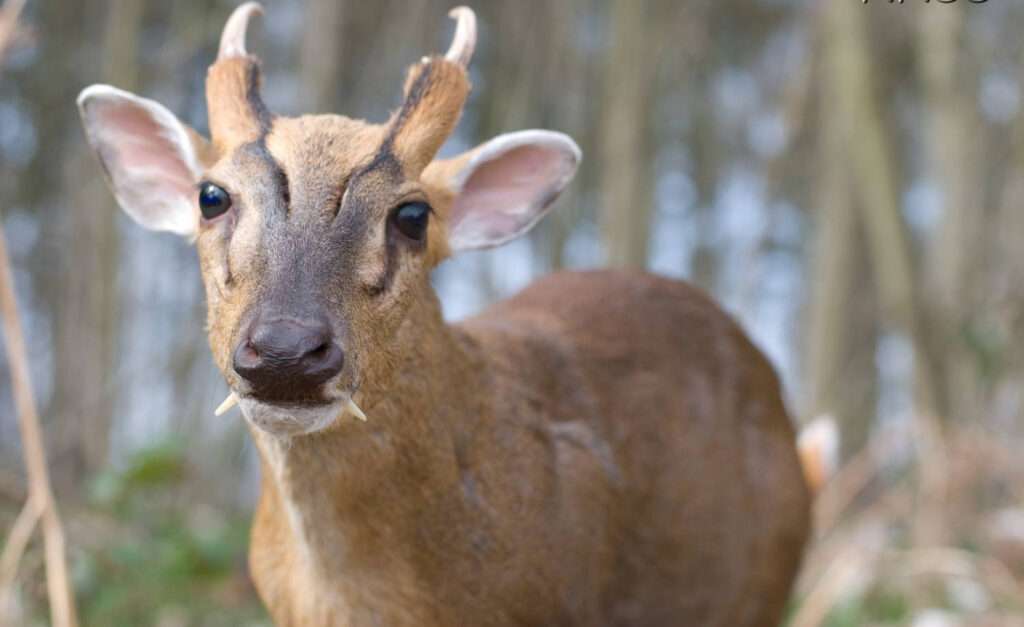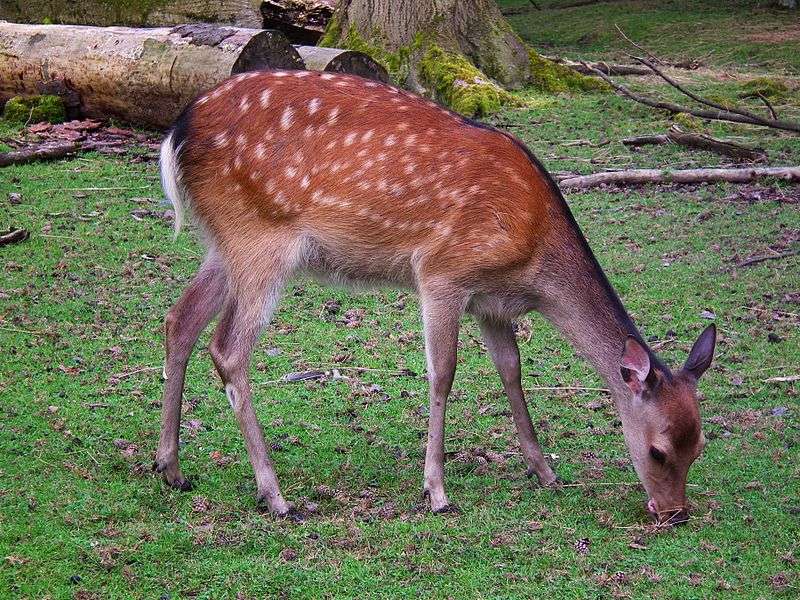
Description
Scientific Name: Muntiacus reevesi sp.
Lifespan: Up to 16 years for males in captivity and female >20 years. Wild males 10 years and 13 years for a female.
Chinese muntjac are little deer relatives. They have heavy blackish-brown legs, short reddish-brown coats with a white throat and chin, and a black stripe running over the nape of the neck. The small antlers on the males are each derived from an elevated stalk known as a pedicel. The females have little, bony knobs and tufts of hair on their heads but no antlers. Tusks, which are the canine teeth that stick out of the mouth, are present in both males and females of the species. Males have bigger canines than females do. Because they will bark when startled, muntjac are frequently referred to as “barking deer.”
Habitat
Chinese muntjacs, sometimes known as Reeves’ muntjacs, are found in Taiwan and southeastern China (from Gansu to Yunnan). These deer live in China’s wide pine and oak woodlands and rocky areas. Additionally, they can be found in low elevations, hilly places, along forest edges, and in environments with shrubs. Reeves’ muntjacs are primarily found in forested areas of Taiwan. There, they can be found in a variety of habitats, including alpine grasslands and coniferous forests at the highest altitudes, as well as subtropical lowlands.

Behavior
Reeves’s muntjacs are often lone, crepuscular creatures. Both sexes protect discrete regions and are territorial. They are supposed to use preorbital gland secretions, which are pheromonal in origin, to mark their territory. Females’ territories typically overlap, whereas male territories only do so with those of females and not with those of other males. Males utilize their antlers to knock opponents off balance before attacking them with their upper canine teeth when protecting their territory or competing for females. Reeves’s muntjacs frequently blaze paths through their range. They move more easily on these pathways. They enjoy clearing areas for sleeping by trampling on them. Reeves’ muntjacs employ chemical signals and vocalizations to communicate with one another. When feeling threatened or when a dominating conspecific is nearby, they will bark. Muntjacs identify their territory by leaving scent imprints on the flora, which are a form of chemical communication.
The mate choice is polygynous in Reeves’s muntjacs. This indicates that throughout each breeding season, men mate with multiple females. Throughout the year, these muntjacs reproduce. Females give birth to one or two fawns after a gestation period of 209 to 220 days. Young individual develop swiftly and are born precociously. They start eating solid foods and are weaned early. In typically, females start nursing their fawns at 17 weeks. Fawns leave their mother’s territory at 6 months old. Within the first year of life, females reach reproductive maturity.
Keeping as a Pet/In Captivity
Prepare the hilly, rocky, and wooded locations before keeping Chinese Muntjac as pets. Muntjacs, whether Chinese or Reeves’, are omnivorous animals. Herbs, blooms, succulent shoots, fungus, berries, grasses, and nuts are some of the foods they eat. They might consume tree bark too. Carrion and eggs are consumed when they are available. Chinese muntjacs use chemical signals and vocalizations to communicate with one another. When feeling threatened or when a dominating conspecific is nearby, they will bark.
Table





